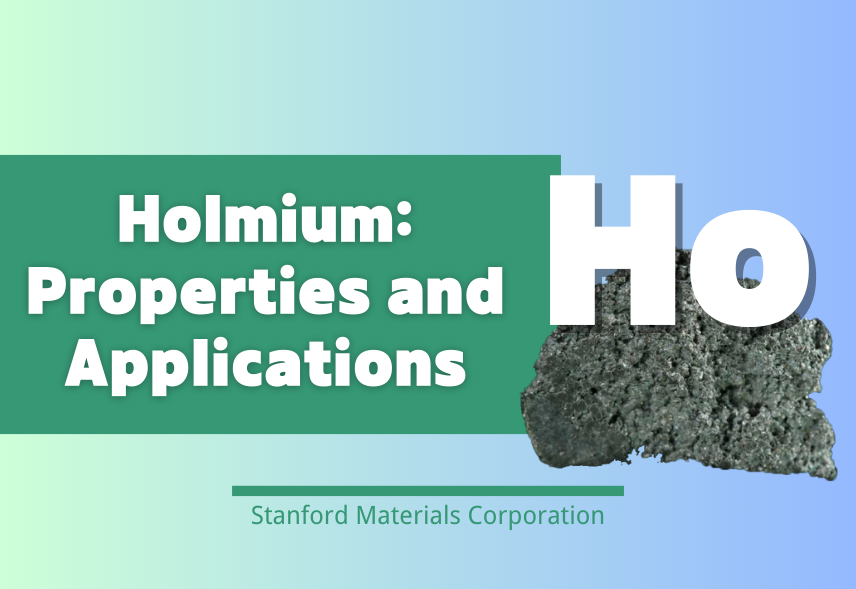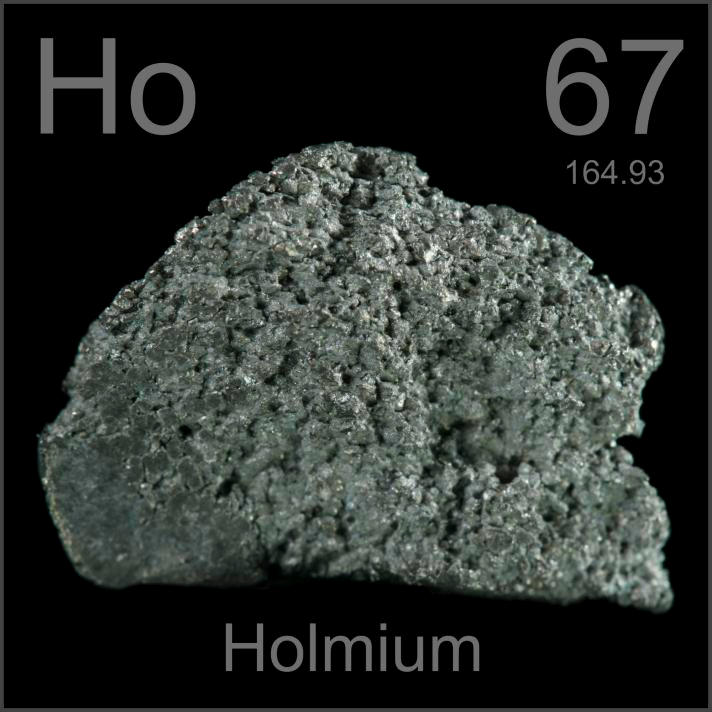
Holmium, symbolized as Ho, is a rare earth element in the lanthanide series. It was discovered in 1878 by Swiss chemists Marc Delafontaine and Jacques-Louis Soret. A year later, in 1879, Swedish chemist Per Teodor Cleve also independently discovered holmium. Holmium is known for its unique magnetic properties and is used in many high-tech industries. In this article, we will explore the main properties of holmium and its applications.
Holmium is a soft, silvery-white metal that can be easily shaped. It is stable in dry air but can tarnish when exposed to moisture. Holmium is relatively rare, found in small amounts in minerals like monazite and gadolinite. Although it is not common, holmium plays an important role in various specialized applications.
One of the most important properties of holmium is its magnetic strength. Holmium has the strongest magnetic moment of all naturally occurring elements. This means it can create and concentrate strong magnetic fields. This property is very useful in devices that need precise magnetic control.
Holmium is also very good at absorbing neutrons, which makes it valuable in nuclear reactors. In reactors, holmium is used in control rods to absorb neutrons and help keep the nuclear reaction stable and safe.
Chemically, holmium usually forms compounds in the +3 oxidation state. This state is stable and leads to the formation of compounds like holmium oxide (Ho2O3). Holmium oxide is yellowish and is often used in glass and ceramics to give them color.
Holmium’s strong magnetic properties make it very useful in creating powerful magnets. These magnets are used in devices that need strong and stable magnetic fields, such as MRI machines. Holmium magnets are essential for medical imaging and data storage technologies.
Holmium is also important in nuclear reactors. As mentioned earlier, it is used in control rods to absorb neutrons. This helps control the nuclear reaction and prevents safety hazards, making holmium an essential material for keeping reactors safe and efficient.
Holmium-doped lasers are widely used in medical procedures. These lasers emit infrared light, which is easily absorbed by biological tissues. This makes holmium lasers useful in surgeries, including eye surgeries and treatments for kidney stones. These lasers can cut and seal tissues with great precision.
Holmium oxide is used as a coloring agent in glass and ceramics. Depending on the mixture, it can give the glass a yellow or red color. This makes holmium useful in producing special optical filters and decorative glass items.
Recently, holmium has gained attention in quantum computing. Researchers found that a single holmium atom can store a bit of data. This discovery could change how we store and process information in the future. Holmium may become an important material in the development of quantum computers.
Holmium is a rare earth element with strong magnetic and neutron absorption properties, making it valuable in several advanced technologies. From its use in powerful magnets and nuclear reactors to its role in laser technology and glass production, holmium is essential in modern science and industry. Stanford Materials Corporation (SMC) offers a variety of high-quality holmium products for different industries.
By learning about the properties and applications of holmium, we can better understand how this rare element helps advance technology and improve our daily lives.
Eric Loewen
Eric Loewen graduated from the University of Illinois studying applied chemistry. His educational background gives him a broad base from which to approach many topics. He has been working with topics about advanced materials for over 5 years at Stanford Materials Corporation (SMC). His main purpose in writing these articles is to provide a free, yet quality resource for readers. He welcomes feedback on typos, errors, or differences in opinion that readers come across.

 Inquiry List
Inquiry List


